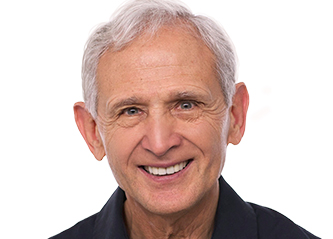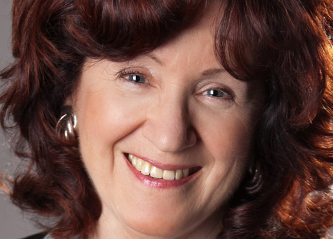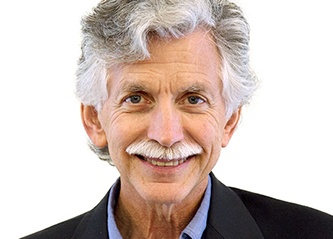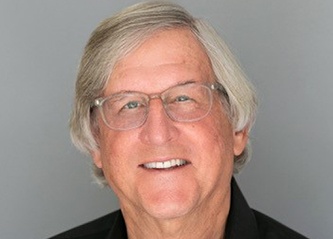Now 50% Off for a Limited Time
50% Off – Sale Ends Tomorrow
50% Off – Sale Ends Tonight
How to Disrupt the Powerful Barriers That Keep Your Client Stuck
 Why do clients get stuck?
Why do clients get stuck?
To fully understand what keeps our clients at a standstill, we need to look deeper at what causes the neurophysiological patterns that lead to gridlock, and how the unconscious brain creates biases that keep our clients immobilized.
And we need to look at new ways to approach the core fear that traps our clients inside a holding pattern of stagnation.
So we sat down with 15 of the greatest experts in our field to ask them how they work with clients who are stuck. This is what they told us. . .
How to Work With Clients Who Are Stuck

How the Unconscious Brain Can Create a Holding Pattern of Fear
Bessel van der Kolk, MD Joan Borysenko, PhD Bill O’Hanlon, LMFT
- How chronic trauma changes the brain (and why it keeps patients stuck)
- How specific neural changes alter the way clients build connections
- How one practitioner shifted himself from fearful avoidance to spontaneity

How to Train the Rigid Mind
Rick Hanson, PhD Kelly McGonigal, PhD
Joan Borysenko, PhD Bill O’Hanlon, LMFT
- How to increase a client’s learning rate from positive experiences.
- How the “dreaded experience” can make your client stuck
- How to pick out the subtle ways your client is stifling self-expression

One Practical Skill to Locate Where Your Client is Stuck
Marsha Linehan, PhD Joan Borysenko, PhD
- What happens when practitioners mistake impulse for choice
- The analytical technique that motivates a client to change
- How to focus an assessment to help clients identify their own stuckness

How to Work With Procedural Memories Keeping Your Clients Stuck
Pat Ogden, PhD Joan Borysenko, PhD
- How to access specific memories that cognitive therapy can’t reach
- The procedural patterns of trauma vs. attachment: why they require two different approaches
- How to help clients become aware of their unconscious patterns.

How to Help Clients Defuse Limiting Ego Strategies
Tara Brach, PhD Ron Siegel, PsyD Kelly McGonigal, PhD
- The “Spacesuit Self”: why clients put it on (and why it’s so hard to take off)
- How to approach stuckness when it’s layered with shame
- The “stop signal” that can disrupt anger and invite choice

How to Sell Your Client on Change
Marsha Linehan, PhD Ron Siegel, PsyD Kelly McGonigal, PhD
Joan Borysenko, PhD Bill O’Hanlon, LMFT
- The one critical part of therapy where many practitioners fall short
- The one emotion that you need to reframe as your client’s worst enemy
- One practical skill that can break clients out of negative patterns

How Post-Traumatic Memories Can Change the Way Clients Relate to their Body
Peter Levine, PhD Ron Siegel, PsyD Bill O’Hanlon, LMFT
- How unconscious reactions to trauma can keep clients stuck
- Why trauma survivors often get stuck in a brain-body feedback loop
- The key factor that can help clients process and recover from traumatic memories.

How to Work With the Behavioral Patterns That Suppress Growth
Richard Schwartz, PhD Ron Siegel, PsyD Kelly McGonigal, Phd
- One Powerful model for helping clients get unstuck
- How to help clients form corrective relationships with their extreme sub-personalities
- The important negotiation process that allows you to reach a client’s stuck parts

How to Use Neuroplasticity to Overwrite Negative Beliefs
Rick Hanson, PhD Bill O’Hanlon, LMFT
- 12 seconds that can make a difference for positive brain change
- Why positive experiences alone are insufficient (unless you follow them up with this one step)
- The important phase of brain change that practitioners routinely overlook

How to Motivate Clients to Push Through Self-Imposed Boundaries
Kelly McGonigal, PhD Ron Siegel, PsyD Bill O’Hanlon, LMFT
- The cocoon effect and how it keeps clients stuck
- How to use the “missing zero” strategy to motivate change
- How to help clients assess the real cost of avoidance

Why Your Client May be Feeling Constrained and How to Help Free Them
Jack Kornfield, PhD Ron Siegel, PsyD
Kelly McGonigal, PhD Joan Borysenko, PhD
- How to adjust an intervention when arousal overwhelms the client
- A strategy to help clients make more empowering decisions
- How to help clients regain a new sense of self after trauma

How to Help Clients Rewrite Their “Stuck Story”
Joan Borysenko, PhD Bill O’Hanlon, LMFT
- One of the most powerful patterns that keeps people from change
- The 10,000-hour plan to becoming stuck
- One way to help clients escape the prison of their grievance stories
Register Here for $197 $97
and get 14 videos, audios, transcripts, plus 2 bonuses
to help you work more effectively with stuck clients
Up to 4 CE/CME Credits or Clock Hours are available for purchase at checkout.
Click HERE to get information about CE/CME credits and clock hours as well as speaker disclosures
You Are Protected By
NICABM’s Money-Back Guarantee
We invite you to register for this comprehensive training program without any risk. Unless you are completely satisfied, we will refund your money. Just let us know within 30 days from the date of registration. We are that confident that you will find this information to be more than you expected.
For This Short Course on How to Work With Clients Who Are Stuck, We Brought Together Some of the Top Experts in the Field

Bessel van der Kolk, MD
Neuroscientist and Professor of Psychiatry at Boston University Medical School. Author of The Body Keeps the Score: Brain, Mind, and Body in the Healing of Trauma.

Marsha Linehan, PhD
Creator of Dialectical Behavior Therapy (DBT); Professor of Psychology, Adjunct Professor of Psychiatry and Behavioral Sciences at the University of Washington and Director of the Behavioral Research and Therapy Clinics.

Peter Levine, PhD
Founder of Somatic Experiencing; Author of Trauma and Memory: Brain and Body in a Search for the Living Past: A Practical Guide for Understanding and Working with Traumatic Memory.

Tara Brach, PhD
Founder of the Insight Meditation Community in Washington, DC; Author of True Refuge: Finding Peace and Freedom in Your Own Awakened Heart and Radical Acceptance: Embracing Your Life with the Heart of a Buddha.

Richard Schwartz, PhD
Founder of Internal Family Systems (IFS) and The Center for Self Leadership; Author of Introduction to Internal Family Systems.

Sue Johnson, EdD
Creator of Emotionally Focused Therapy (EFT); Founder and Director of the International Centre for Excellence in Emotionally Focused Therapy.

Pat Ogden, PhD
Pioneer in Somatic Psychology; Founder and Director of Sensorimotor Psychotherapy Institute (SPI); Co-founder of the Hakomi Institute; Author of Sensorimotor Psychotherapy: Interventions for Trauma and Attachment.

Rick Hanson, PhD
Senior Fellow of the Greater Good Science Center at UC Berkeley; New York Times bestselling author of Hardwiring Happiness and Buddha’s Brain.

Joan Borysenko, PhD
Founder of Mind/Body Health Sciences LLC; Author of New York Times Bestseller Minding the Body, Mending the Mind.

Jack Kornfield, PhD
Co-founder of the Insight Meditation Society and Spirit Rock Meditation Center; Author of The Wise Heart and Bringing Home the Dharma: Awakening Right Where You Are.

Ron Siegel, PsyD
Assistant Professor of Psychology, part time, Harvard Medical School; Author of The Mindfulness Solution: Everyday Practices for Everyday Problems and Sitting Together: Essential Skills for Mindfulness-Based Psychotherapy.

Kelly McGonigal, PhD
Health psychologist and lecturer at Stanford University; Author of The Upside of Stress: Why Stress Is Good for You and How to Get Good At It and The Willpower Instinct: How Self-Control Works, Why It Matters, and What You Can Do to Get More of It.

Esther Perel, MA, LMFT
Bestselling author of Mating in Captivity: Unlocking Erotic Intelligence; Faculty member of The Family Studies Unit, Department of Psychiatry, New York University Medical Center.

Michael Yapko, PhD
Leading expert in clinical hypnosis and treating depression; Clinical psychologist and author of 15 books including his newest books, The Discriminating Therapist and Keys to Unlocking Depression.

Bill O’Hanlon, LMFT
Co-developer of Solution-Oriented Therapy; Psychotherapist, speaker, and author of Do One Thing Different: Ten Simple Ways to Change Your Life.

Course Director
Ruth Buczynski, PhD
Here's What You'll Get:
Everything is yours to keep forever in your professional library
|
|
Downloadable videos so you can watch at your convenience, on any device |
|
|
Audio recordings you can download and listen to at home, in the car, at the gym or wherever you like |
|
|
Professionally-formatted transcripts of the sessions, to make review and action simple |
|
|
Two downloadable bonus videos to help you work more effectively with clients who are stuck |
Get 2 Bonuses That Give You Even More Strategies to Help Clients Move Forward
Bonus 1 | How to Work With Stuck Relationships

The Rigid Mindset That Ruins Relationships
Esther Perel, MA, LMFT Joan Borysenko, PhD
- How to listen for the client’s “get me out of here” moment
- How to help clients develop the space to disrupt absolutist thinking
- How hostile dependence feeds a victim mentality in stuck clients

How to Help Clients Trapped in a Shame-Rejection-Fear Loop
Sue Johnson, EdD Ron Siegel, PsyD Bill O’Hanlon, LMFT
- How to follow the emotional trail that leads to the moment of stuckness
- How to engage with the withdrawn partner in a stuck relationship
- The perfect storm that turns shame and rejection into negative self-judgments
- How to change stuckness by introducing this one corrective element

How to Work With Clients When Their Stability Goes Rigid
Esther Perel, MA, LMFT Bill O’Hanlon, LMFT
Kelly McGonigal, PhD Ron Siegel, PsyD
- One structural change to the relationship that can force action
- How to approach a couple’s ambivalence that will motivate them for change
- The one desperate situation that requires a practitioner to be outspoken
Bonus 2 | What Can Go Wrong When the Practitioner Gets Stuck (And How to Prevent It)

Why We May Be Unconsciously Contributing to Our Clients’ Stuckness
Michael Yapko, PhD Marsha Linehan, PhD Ron Siegel, PsyD
Kelly McGonigal, PhD Joan Borysenko, PhD
- How your approach might be driving the client deeper into stuckness
- A critical shift in attitude that can save you (and the client) from long-term therapy
- The hidden fear that can keep your client stuck (and why it’s easily mis-assessed)
Register Here for $197 $97
and get 14 videos, audios, transcripts, plus 2 bonuses
to help you work more effectively with stuck clients
Up to 4 CE/CME Credits or Clock Hours are available for purchase at checkout.
Click HERE to get information about CE/CME credits and clock hours as well as speaker disclosures
You Are Protected By
NICABM’s Money-Back Guarantee
We invite you to register for this comprehensive training program without any risk. Unless you are completely satisfied, we will refund your money. Just let us know within 30 days from the date of registration. We are that confident that you will find this information to be more than you expected.
Here's What Your Peers Have Experienced In NICABM Programs

. . . I feel so fortunate to have this access to brain power, experience and research synthesis . . .
“When I listen to the experts talk openly about their experience, I feel so fortunate to have this access to brain power, experience and research synthesis on cutting edge issues! I go back to the videos to reinforce things that will assist my clients.”
Mary Logan, Counselor
Ipswich, MA

I benefit, my practice benefits, and most important my clients benefit . . .
“I live in Nova Scotia and have limited travel funds at the university at which I work. The series provided by NICABM gives me the rare opportunity to listen to the leaders in the field. As a result, I learn valuable information that would not otherwise be available to me. I benefit, my practice benefits, and most important my clients benefit from the knowledge and wisdom I gain from the series.”
David Mensink, PhD Counseling Psychology, Psychologist
Halifax, Nova Scotia, Canada

. . . some dare to go the extra journey to research and educate
“These NICABM series keep me afloat, in touch, on track, well trained in my field, and more personally healthy. The best aspect, though, is that I feel validated and comforted knowing that some dare to go the extra journey to research and educate, so I can walk the path to health, and can share with others.”
Mary Corsello-Vilcheck, LCSW
Midlothian, VA
Why the Transcript Is Essential:
- The transcript makes it easy to go back and double check concepts, citations and names that are mentioned
- We put in a table of contents to make it easy for you to find the exact part of the webinar you need
- Having the concepts already written allows you to take notes on how you’re going to use the ideas rather than transcribing the ideas
- Some people simply learn better by reading than by listening or watching
- You will be able to print out and share techniques presented in the session with your patients

“I really liked being able to follow along with the transcripts as I listened…it was nice not to feel like I had to take notes. I really feel like I remember more when I both hear and see at the same time.”
Mary Ellen McNaughton, Masters in Counseling, Psychology Counselor
Kelowna, British Colombia, Canada
You Are Protected By
NICABM’s Money-Back Guarantee
We invite you to register for this comprehensive training program without any risk. Unless you are completely satisfied, we will refund your money. Just let us know within 30 days from the date of registration. We are that confident that you will find this information to be more than you expected.
Register Here for $197 $97
and get 14 videos, audios, transcripts, plus 2 bonuses
to help you work more effectively with stuck clients
Up to 4 CE/CME Credits or Clock Hours are available for purchase at checkout.
Click HERE to get information about CE/CME credits and clock hours as well as speaker disclosures
